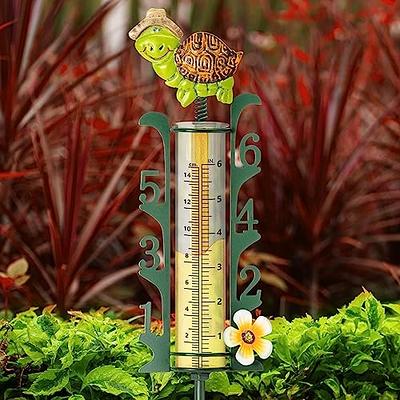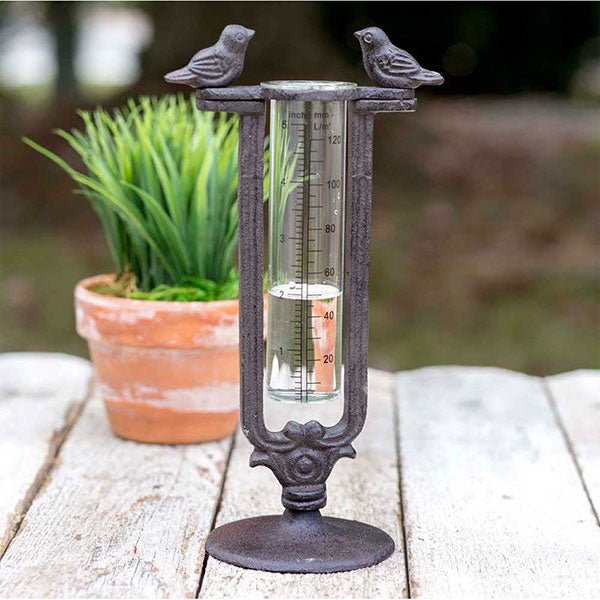Comprehending The Rain Gauge: Value, Types, and Use Explained
Comprehending The Rain Gauge: Value, Types, and Use Explained
Blog Article
Exactly How to Pick the Right Rain Gauge for Accurate Rain Data
To get trusted measurements, it is essential to select the right rain gauge. Taking into consideration factors such as area, type, and precision of the rainfall gauge will help make certain exact data collection. In addition, comprehending the upkeep and calibration procedures will certainly add to the long life and dependability of your rain gauge.
Importance of Picking the Right Rainfall Scale
The relevance of selecting the appropriate rain scale hinges on getting dependable and precise rainfall information for exact meteorological analysis. Rain information is vital for a vast array of applications, including climate projecting, hydrological modeling, and environment research study. Unreliable or unreliable information can cause wrong conclusions and flawed decision-making processes.

Second of all, the accuracy and precision of the rain scale are vital. The gauge ought to be able to determine rainfall with high precision, catching also percentages of rainfall properly. It needs to likewise decrease mistakes because of dissipation, wind, and various other environmental elements. Normal calibration and upkeep are crucial to ensure continuous accuracy.
Furthermore, the location and installment of the rain scale are vital considerations. It ought to be placed in an open location, far from blockages that can impact rains measurements. The scale must be positioned at a proper height and angle to stay clear of spilling and ensure correct catchment of rain.
Factors to Take Into Consideration When Selecting a Rainfall Scale
When choosing a rainfall gauge, there are several crucial variables to consider. There are various types offered, including conventional rainfall gauges, tipping bucket rainfall determines, and evaluating rain determines.
Another variable to consider is the material of the rain gauge. Rainfall evaluates can be made of different products, such as glass, plastic, or metal. The product picked should be resistant and resilient to weather conditions, ensuring that the rainfall gauge will withstand the elements and supply exact measurements over time.
Accuracy is additionally a vital factor to take into consideration. Try to find rainfall gauges that have actually been adjusted and examined for accuracy. Attributes such as anti-splash rings and funnels can additionally boost the accuracy of the measurements.

Lastly, take into consideration the climate and environment in which the rainfall scale will certainly be made use of. Various rainfall evaluates are suitable for various environments, so it is very important to select one that is appropriate for the problems in your area.
Various Sorts Of Rain Evaluates Offered
To additionally check out the aspects to think about when picking a rainfall scale, it is vital to recognize the different kinds of rain determines offered. There are several kinds of rain evaluates, each with its own advantages and disadvantages. One of the most usual kind is the conventional rain gauge, additionally referred to as the cylindrical rainfall gauge. This type contains a straight-sided cylindrical container with a funnel-shaped top. It is easy to make use of and gives exact measurements of rains.
Another type of rainfall scale is the tipping bucket rain scale. As the rainfall falls right into the scale, dig this it fills up one side of the pail, creating it to empty the water and tip.
A third type of rain gauge is the evaluating rain scale. This gauge uses a balance system to measure the weight of the accumulated rains. As the rain comes under the gauge, it is accumulated in a container connected to a balance. The weight of the water is determined, and the rainfall quantity is determined based on the weight. Considering rain assesses are very exact yet can be extra expensive and call for routine maintenance.
Finally, there are also remote rain gauges that usage advanced technology to gauge rains (The Rain Gauge). These determines use sensors and transmitters to send information wirelessly to a main unit. Remote rain gauges are hassle-free for checking rains in hard-to-reach locations or for large-scale data collection
Just How to Identify the Accuracy of a Rain Gauge
One means to analyze the accuracy of a rain gauge is by carrying out routine calibration dimensions. Calibration includes contrasting the readings of a rain scale to a standard measurement, such as a licensed rain gauge or a weather terminal with high accuracy. By contrasting the dimensions, any type of disparities or errors in the rain scale can be identified and represented.
To perform a calibration dimension, start by gathering rains data from both the rain gauge and the common dimension gadget over a specific amount of time, such as a month. Compare the readings and calculate the distinction between them. This difference is known as the calibration error.
It is very important to keep in mind that calibration measurements must be done regularly, as environmental factors, such as temperature level, particles, and wind, can affect the accuracy of the rain gauge over time. By carrying out routine calibrations, any type of adjustments in the precision of the rain scale can be detected and modifications can be made appropriately.
Along with calibration, it is additionally recommended to tidy and preserve the rainfall gauge consistently to ensure its precision. Eliminate any type of debris or blockages that might impact the precision of the measurements, and look for any kind of signs of damage or use that might require repair services or substitute.
Tips for Maintaining and Adjusting Your Rain Gauge
Normal upkeep and calibration are crucial for making sure the precision and integrity of your rainfall scale in determining rains information (The Rain Gauge). By complying with a couple of easy pointers, you can make certain that your rain scale is properly maintained and adjusted
To start with, it is very important to clean your rain scale regularly to stop any type of particles or dust from obstructing the rainfall collection mechanism. Use a soft brush and a moderate detergent to carefully cleanse the within and exterior of the scale. Rinse it thoroughly with clean water and allow it to dry entirely prior to re-installing it.
Secondly, it is advised to calibrate your rain scale at the very least once a year. Calibration involves comparing the measurements of your rainfall scale with those of a relied on and accurate referral scale. This will help you identify and fix any kind of potential errors in your rainfall scale's dimensions.
To calibrate your rain scale, collect a recognized quantity of water making use of a gauging container and compare it with the dimensions videotaped by your rain scale. Readjust discover here the analyses appropriately to ensure accuracy.

Final Thought
In final thought, selecting the appropriate rain gauge is crucial for obtaining exact rains data. Factors such as objective, place, and budget should be taken into consideration when selecting a rain scale.
There are various types available, consisting of common rainfall gauges, tipping bucket rainfall determines, and evaluating rain determines.To further discover the factors to think about when selecting a rainfall scale, it is important to understand the different kinds of rain determines readily available. The most common kind is the Going Here typical rainfall scale, additionally known as the cylindrical rainfall gauge.One more type of rainfall scale is the tipping bucket rainfall scale. Calibration involves contrasting the analyses of a rain gauge to a common dimension, such as a qualified rain scale or a weather condition terminal with high precision.
Report this page